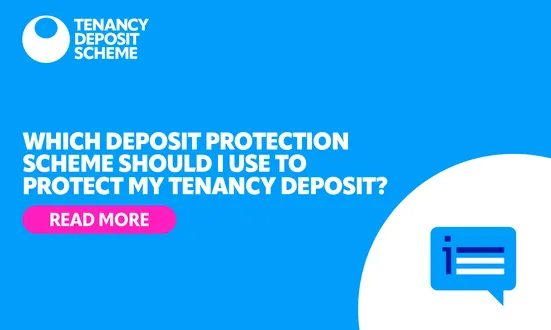Good tenancy management is imperative in lettings. It is important to be aware of what to do with a tenants’ deposit at the beginning and at the end of the tenancy to ensure that all parties are protected and part of this is making sure that the tenancy and deposit registrations are accurate and up to date.
As a customer of Tenancy Deposit Scheme (TDS) you have access to a library of information to help you get it right and help to streamline the processes to make deposit protection easy. Today we are going to look at how to correctly end tenancies in TDS Insured.
Landlords or lettings agent customers using TDS Insured are responsible for holding the tenants’ deposit as the ‘stakeholder’. At the end of the tenancy, the customer should log in to their TDS Insured account and archive the registration of that tenancy. This keeps the tenancy deposit registrations up to date and ensures that landlords and letting agents are compliant with tenancy deposit legislation and the TDS Insured membership rules.
Rules of membership for TDS Insured:
Tenancy Deposit Scheme for Landlords Membership Rules
Tenancy Deposits Scheme for Lettings Agents and Corporate Landlords Membership Rules
If at the end of the tenancy, the landlord or lettings agent and tenant enter into a new fixed term tenancy, the landlord will need to re-register the deposit against the new tenancy.
At the point where the tenancy ends and the landlord or lettings agent archives the deposit registration, the deposit protection will end and TDS will send an email to the tenant, to notify them that the status of the deposit registration has been changed.
For this reason, it is important to remain up to date with the administration surrounding tenancy deposits and make sure that tenants get the correct communications at the end of the tenancy.
If a deposit dispute arises at the end of a tenancy, TDS will request for the disputed amount from the deposit to be sent to TDS. To comply with the TDS Insured membership rules, this must be sent to TDS within 10 days of the request being made.
The parties have up to three months after the end of a tenancy to raise a dispute. It is important to note that non-compliance of the membership rules will result in a customer’s membership being suspended and may result in a membership being terminated so it is important to get things right.
A few simple changes to your end of tenancy process can really make a big difference. For more information or more top tips and how to make tenancy deposit protections easy, visit our Information Lounge today!
If you would like to find out more about joining or switching to TDS today and the benefits that being a TDS customer can bring you, please click here.
About Tenancy Deposit Scheme (TDS)
Tenancy Deposit Scheme (TDS) is a Government-approved scheme for the protection of tenancy deposits; TDS offers both Insured and Custodial protection and also provides fair adjudication for disputes that arise over the tenancy deposits that we protect.
TDS can only comment on the process for our scheme, other deposit protection schemes may have a different process/require different steps. Content is correct at the time of writing.
These views are those of the author alone and do not necessarily reflect the view of TDS, its officers and employees.

Other news stories


